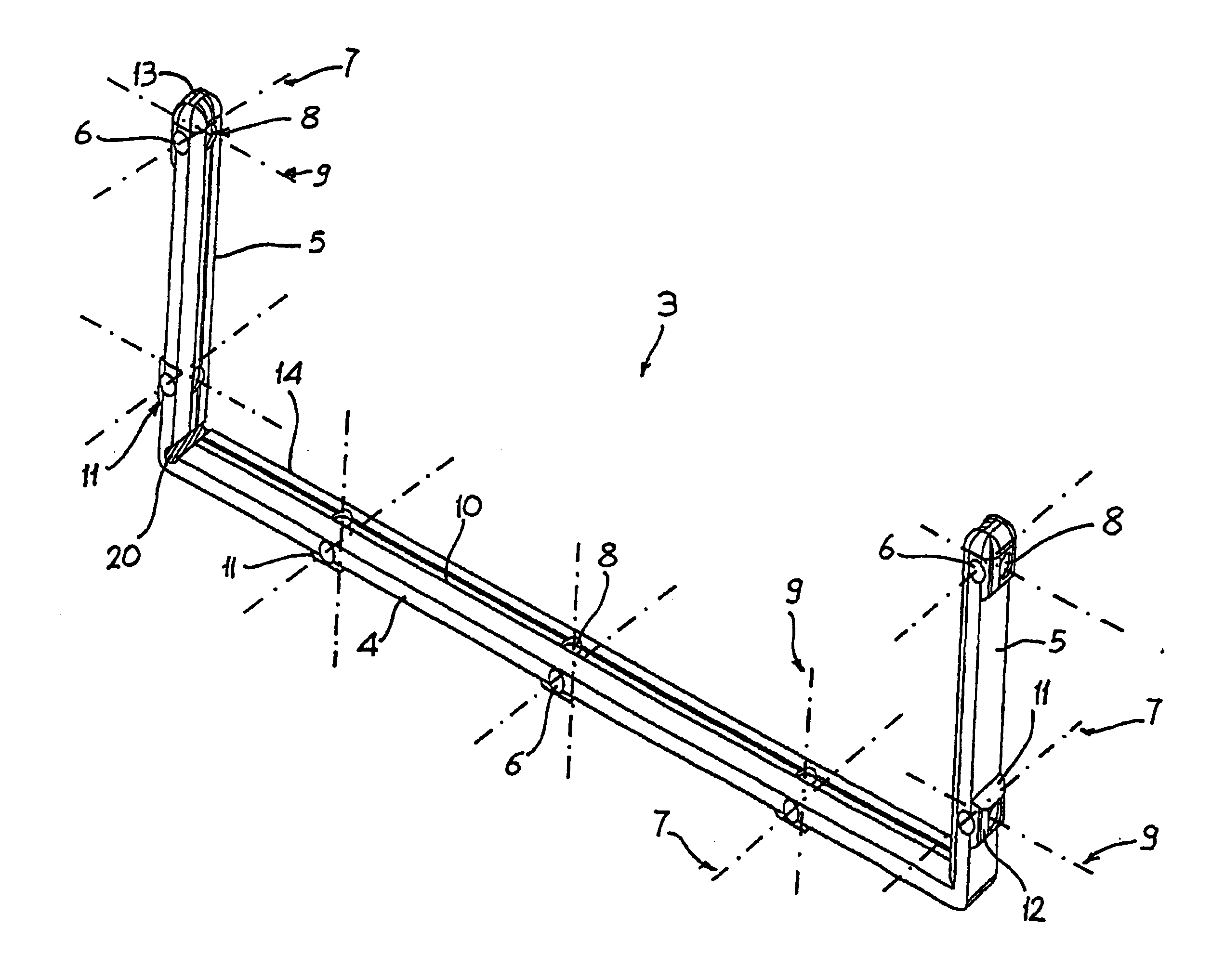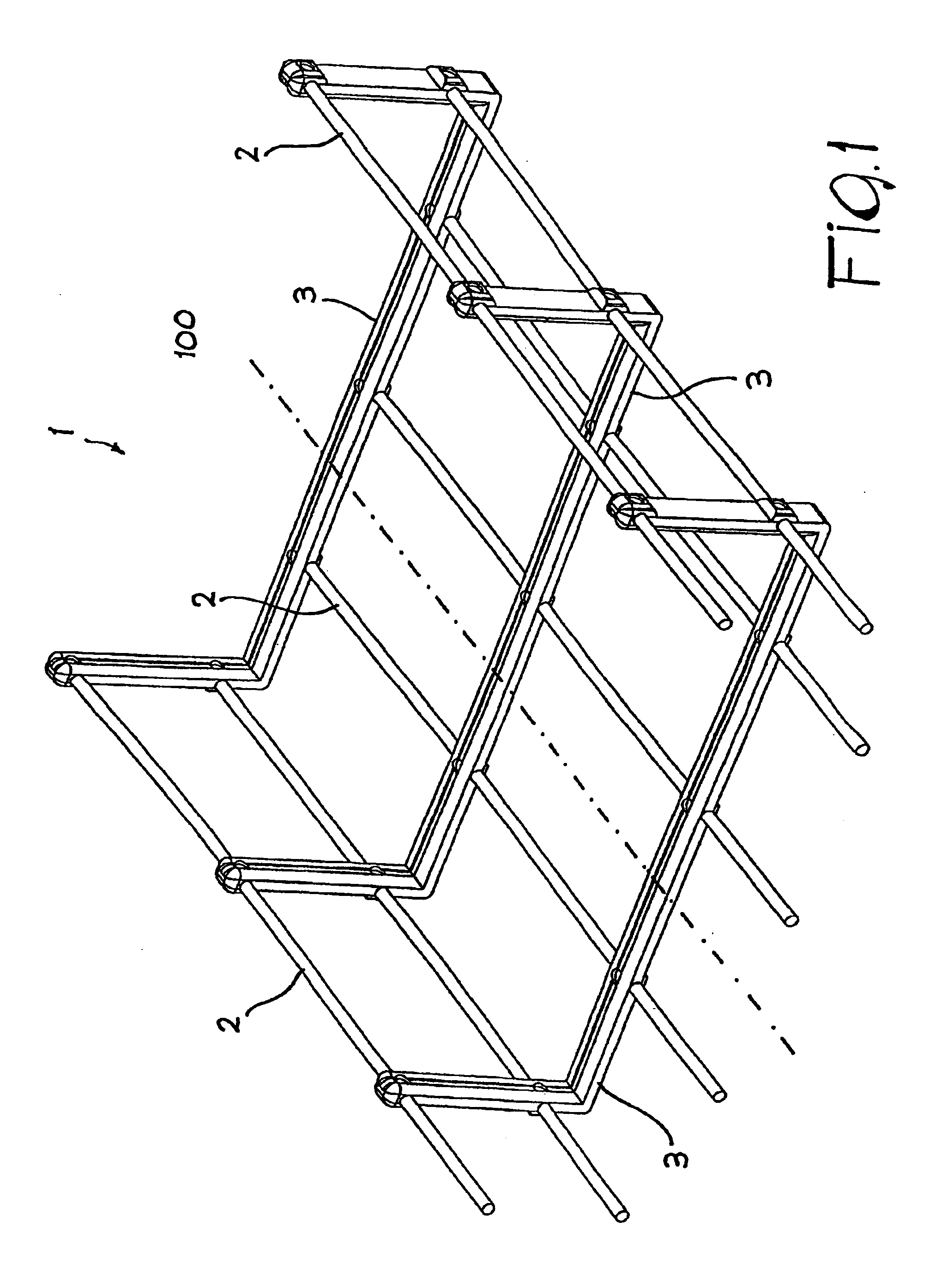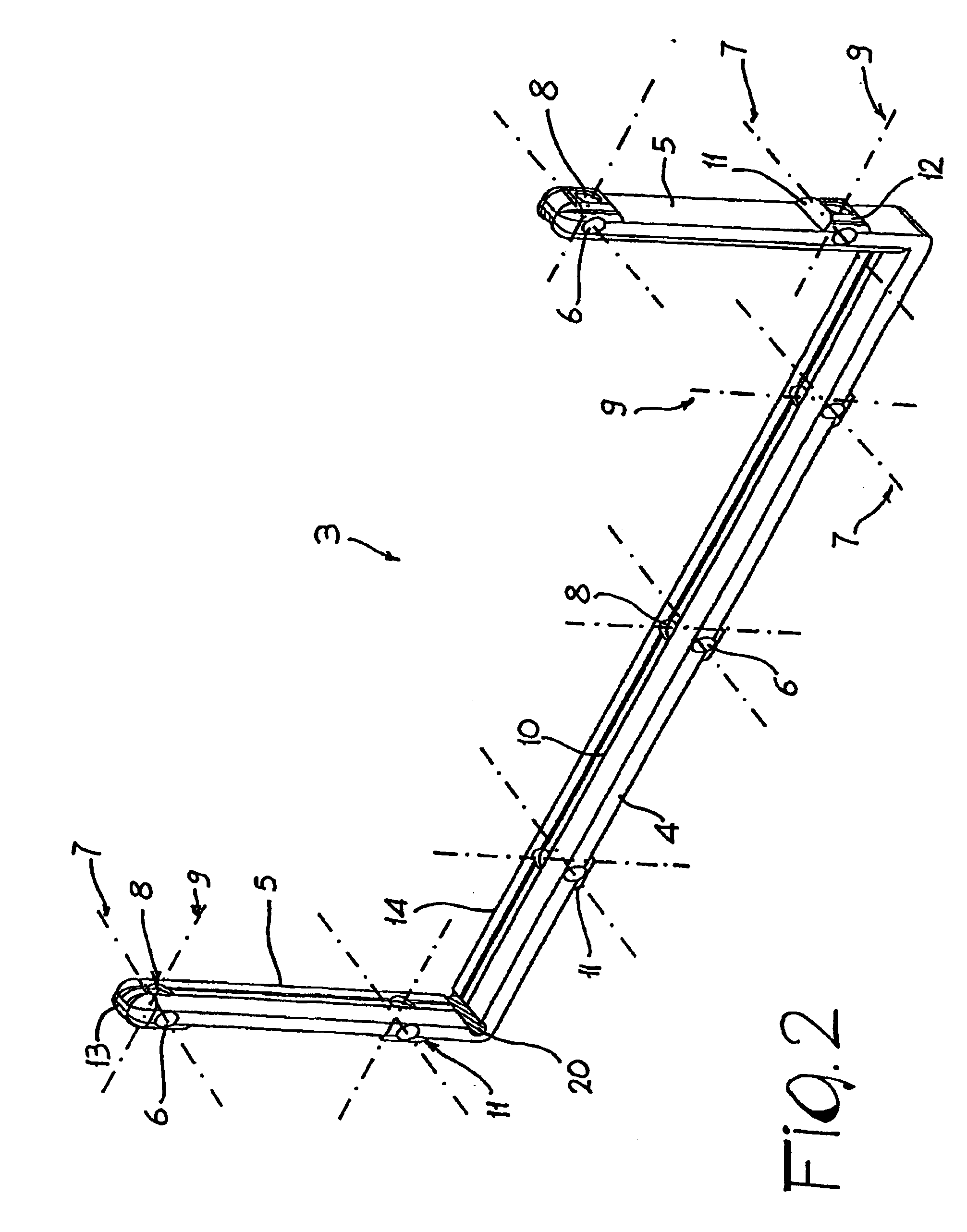Duct for cables
a cable and duct technology, applied in the direction of mechanical equipment, other domestic objects, machine supports, etc., can solve the problems of reducing mechanical resistance, reducing the dimensions of the duct and the load that it is able to withstand, and certain critical factors and some not entirely satisfactory technical aspects, so as to improve mechanical performance and optimize functional performance.
- Summary
- Abstract
- Description
- Claims
- Application Information
AI Technical Summary
Benefits of technology
Problems solved by technology
Method used
Image
Examples
Embodiment Construction
With reference to the figures referred to above, the duct for cables according to the invention, defined as a whole by the reference number 1, comprises a plurality of filiform metal elements 2 arranged substantially parallel to one another, which extend, in a rectilinear or quasi-rectilinear way, in the direction of longitudinal development of the duct, designated in FIG. 1 by the reference axis 100. In the embodiment illustrated in FIG. 1, the filiform elements 2 are constituted generally by metal wire with circular cross section; alternatively, and in an altogether equivalent way, the filiform elements 2 could be made with a different cross section, for example square, rectangular, or still other shapes provided that they are compatible with the application.
Advantageously, the duct for cables 1 comprises, for at least a portion of its development in length, a plurality of structural modules 3, operatively associated to the, filiform elements 2 according to the modalities which wi...
PUM
 Login to View More
Login to View More Abstract
Description
Claims
Application Information
 Login to View More
Login to View More - R&D
- Intellectual Property
- Life Sciences
- Materials
- Tech Scout
- Unparalleled Data Quality
- Higher Quality Content
- 60% Fewer Hallucinations
Browse by: Latest US Patents, China's latest patents, Technical Efficacy Thesaurus, Application Domain, Technology Topic, Popular Technical Reports.
© 2025 PatSnap. All rights reserved.Legal|Privacy policy|Modern Slavery Act Transparency Statement|Sitemap|About US| Contact US: help@patsnap.com



